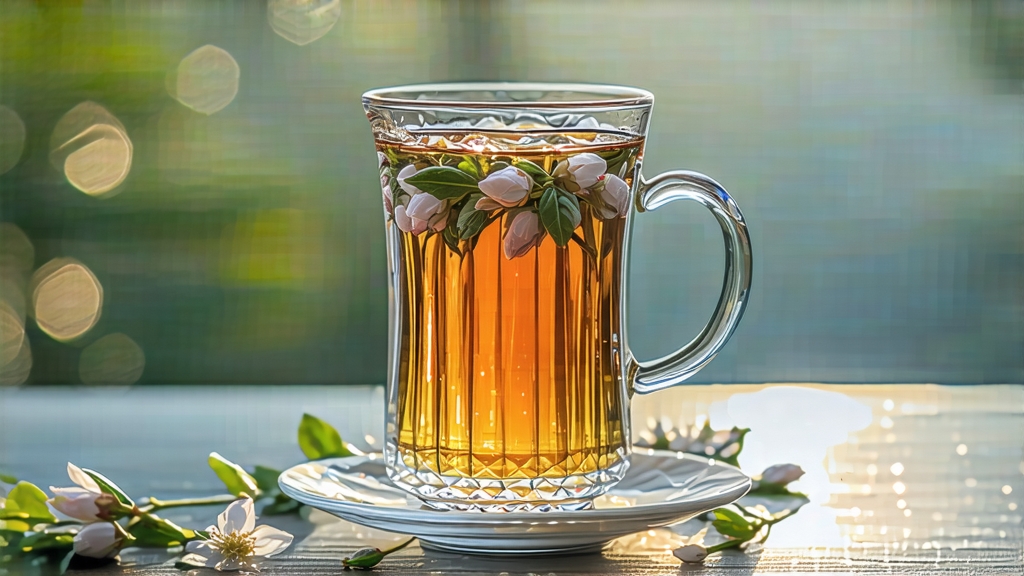
White tea is the quietest child in the Chinese tea family, and within that hush White Hair Silver Needle (Bai Hao Yin Zhen) whispers the softest legend of all. International drinkers often meet white tea through generic “silver needles” that arrive in tinted tins, yet the original has a single birthplace: the coastal hills of Fuding and Zhenghe in Fujian province, where the cultivar Fuding Da Bai Hao was first documented during the late Qing dynasty. Local chronicles from 1857 describe a county magistrate who transplanted several wild tea trees whose buds were “white as frost and fragrant as orchid,” presenting them to the imperial court as a medicine for cooling internal heat. The court physicians recorded that the infusion “cleared the eyes and calmed the liver,” and so the tiny buds entered palace life as a seasonal tribute. When the last emperor abdicated in 1912, the tribute system collapsed; farmers, left with rows of unsold buds, dried them on bamboo trays and sold them to foreign merchants in nearby Fuzhou. By the 1920s Fuding Silver Needle was already sailing through Singapore and London, but the world still knew almost nothing about how it was coaxed into being.
Botanically, only two cultivars are legally permitted for authentic White Hair Silver Needle: Fuding Da Bai Hao and Zhenghe Da Bai. The former yields fatter buds whose down is silvery-white; the latter produces slightly slimmer buds with a pewter sheen and higher polyphenol content, giving a grassier cup. Purists insist that any plucking standard lower than “one unopened bud, no leaf, no stem” forfeits the name, yet market pressure has created satellite styles—Anji Silver Needle, Yunnan Moonlight White, even Assamica buds from the mountains of Yunnan—each delicious, each technically outside the orthodoxy. Within Fujian itself the micro-zones matter: buds from Taimu Mountain carry a marine salinity because sea fog drifts inland at dawn, while those from the higher town of Guantou develop thicker down and a custard-like sweetness. Thus a single cultivar can taste like ocean air or like warm rice milk depending on which slope it opened its eyes to the morning.
The craft looks maddeningly simple: pick, wither, dry. In reality the process is a slow-motion conversation between moisture, enzyme, and weather that can collapse if the tea maker misreads a single hour. Picking begins when the bud reaches 2.5–3 cm but before the first leaf unfurls, usually between mid-March and early April. Experienced pluckers use only thumb and index finger, snapping the bud upward so the tiny growth node shears cleanly; a downward tug bruises the tissue and later shows up as brown “burn” marks after drying. The day’s harvest is cradled in shallow bamboo baskets lined with gauze—never plastic—to keep the buds breathing. By dusk the tea is spread on water-woven bamboo trays stacked like hollow shelves inside a sunroom called a “qing qiang.” Here the buds rest for 36 to 48 hours at 22–26 °C and 65–70 % relative humidity, losing moisture in uneven rhythms that force internal enzymes to nibble at proteins and carbohydrates, releasing free amino acids and simple sugars. The tea master’s real skill is refusing impatience: if outdoor humidity spikes he may slide the trays into a corridor fired by charcoal embers kept just warm enough to keep air moving, but never hot enough to bake. When the bud feels cool and leathery—about 10 % residual moisture—it is transferred to a gentle charcoal basket whose embers are covered with a thin layer of ash so that only radiant heat, not smoke, reaches the tea. Forty minutes later the downy hairs have turned from damp grey to dry silver, and the bud snaps with a sound like fresh pasta breaking. Total water content must fall below 5 %; any higher and the tea will sour within months.
Western drinkers often treat white tea as too delicate to brew, yet Silver Needle rewards boldness if you respect its structure. Because the bud is tightly rolled, it needs more space to unfurl than a twisted leaf; therefore tall, narrow glasses or a 150 ml gaiwan are ideal. Start with 4 g of buds—roughly two heaping teaspoons—for every 120 ml of water.